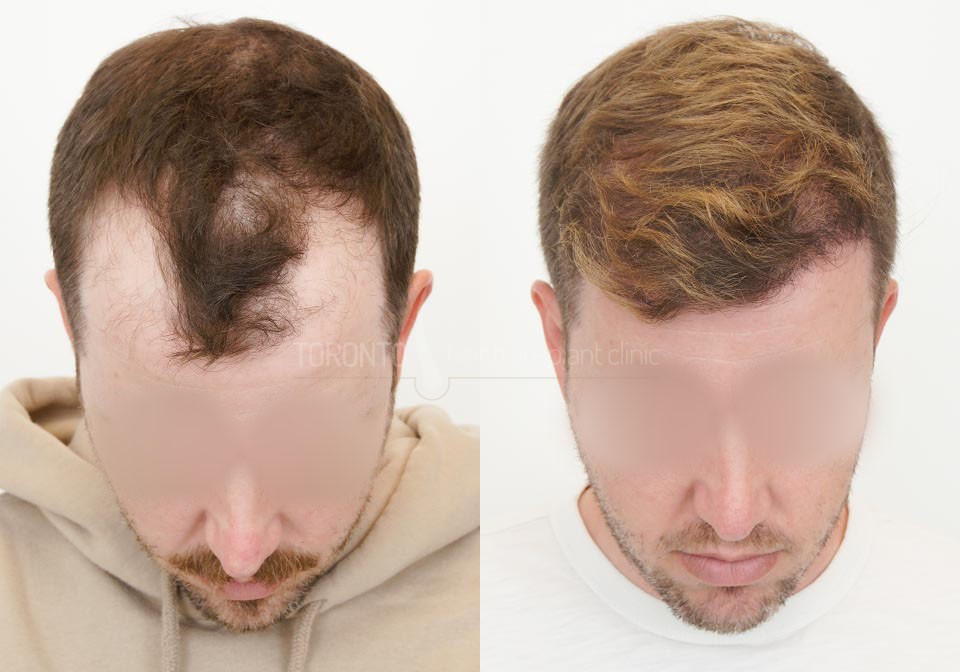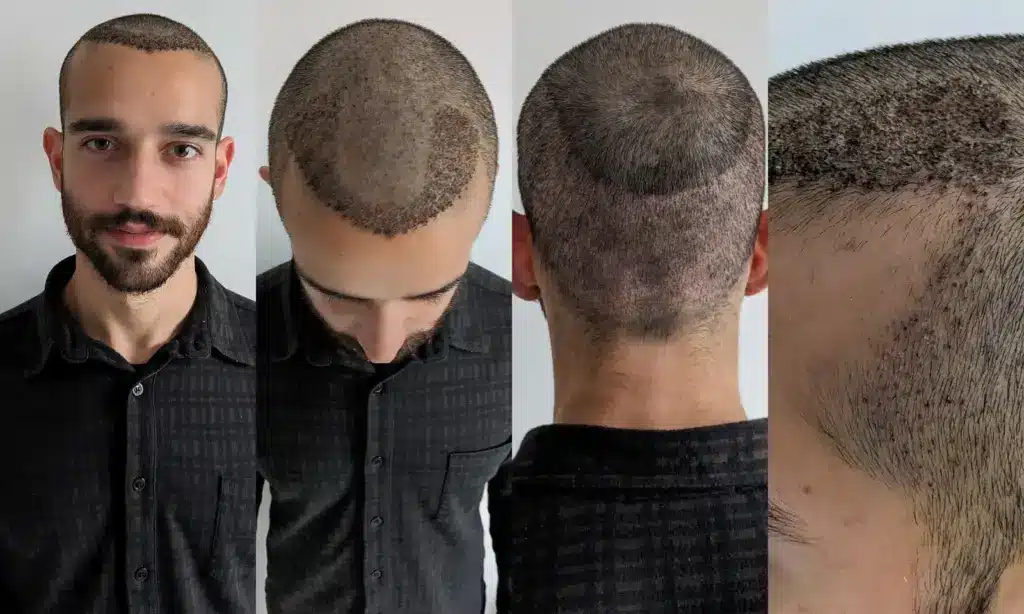Hair loss is a common concern affecting millions of people worldwide, irrespective of age and gender. It can have a profound impact on one’s self-esteem and overall quality of life. Data show that by the time they are 50 years old, an astounding 85% of males will have some form of male pattern baldness, while about 40% of women will have hair thinning.
Fortunately, advancements in medical science and technology have paved the way for a variety of effective hair loss solutions and restoration techniques. This comprehensive guide delves into the causes of hair loss, explores traditional and cutting-edge treatments, and provides insights into the latest hair restoration techniques available today.
Table of Contents
Understanding & Figuring out the Types and Causes of Hair Loss
Hair loss, medically known as alopecia, can stem from a myriad of factors, each influencing the approach to effective treatment. One of the most prevalent causes is genetic predisposition, specifically androgenetic alopecia, also known as male or female pattern baldness. This hereditary condition, characterized by the gradual thinning of hair, is heavily influenced by hormonal factors.
Hormonal changes, often linked to pregnancy, childbirth, menopause, or thyroid issues, can also lead to significant hair loss, either temporarily or permanently. Medical conditions present another major category, with ailments such as alopecia areata, an autoimmune disorder, scalp infections, and systemic diseases like lupus contributing to hair thinning and loss.
Medications and treatments are also significant contributors to hair loss. Drugs prescribed for cancer, arthritis, depression, and high blood pressure are known to have hair loss as a side effect, presenting a challenge for those undergoing long-term treatment. Physical and emotional stress plays a crucial role as well; severe stress can trigger telogen effluvium, a condition where hair follicles enter a resting phase, leading to widespread hair shedding. Nutritional deficiencies, particularly a lack of essential nutrients like iron, protein, and vitamins, are another common cause. A balanced diet is vital for maintaining healthy hair growth and preventing loss.
Moreover, hair health can be significantly impacted by hairstyling procedures and treatments. Hair follicle damage can result in hair breakage and loss due to overuse of heat styling tools, chemical treatments, and tight hairstyles. Effective diagnosis and treatment of hair loss depend on an understanding of these various causes. People can control and minimize hair loss by seeking customized therapies, ranging from medical intervention to lifestyle modifications, once the underlying cause of hair loss has been determined.

Let’s First Understand The Traditional Hair Loss Treatments
Understanding the more conventional approaches to treating hair loss is necessary before attempting any of the newest ones. Here are some common traditional hair loss treatments!
1. Medications:
As for the medication there are tow types of medications use for it. First is Minoxidil (Rogaine) is an over-the-counter topical treatment that stimulates hair growth and slows down hair loss. It’s suitable for both men and women.
Second is Finasteride (Propecia) is an oral prescription medication for men that reduces hair loss by inhibiting the hormone responsible for follicle shrinkage.
2. Hair Transplants:
the most common is Follicular Unit Transplantation (FUT) that involves removing a strip of scalp from the back of the head and transplanting individual follicular units to balding areas.
Also, Follicular Unit Extraction (FUE) is a traditional hair transplant in which individual hair follicles are extracted from the scalp and transplanted to balding areas. This method is less invasive and leaves minimal scarring.
3. Scalp Treatments:
Scalp Micropigmentation (SMP) is a revolutionary non-surgical treatment designed to address hair loss by creating the illusion of fuller hair. This technique uses micro-needles to deposit small amounts of pigment into the scalp, mimicking the appearance of natural hair follicles. SMP is an ideal solution for those with thinning hair, bald patches, or complete baldness, offering an immediate aesthetic improvement. Unlike hair transplants, SMP is minimally invasive, requires no downtime, and can be tailored to match the color and density of your existing hair, providing a natural and realistic look.
4. Lifestyle and Proper Hair Care:
Maintaining a balanced diet is fundamental to supporting healthy hair growth. Hair is primarily made of protein, so consuming adequate amounts of protein-rich foods like eggs, fish, lean meats, and legumes is crucial. Additionally, vitamins and minerals play a significant role in hair health. For instance, vitamin A helps produce sebum, which keeps hair moisturized, while vitamin C aids in collagen production, essential for hair strength. Iron-rich foods like spinach and lentils help prevent anemia, a common cause of hair loss. Biotin, found in nuts and seeds, promotes hair growth, and omega-3 fatty acids from sources like salmon and flaxseeds add shine and elasticity to hair.
Proper hair care is essential in preventing hair damage and loss. Avoiding excessive heat styling is crucial, as frequent use of blow dryers, curling irons, and straighteners can weaken hair strands, leading to breakage. When heat styling is necessary, using a heat protectant spray can mitigate damage. Harsh chemical treatments, such as coloring, perming, and relaxing, should be minimized.
These processes can strip hair of its natural oils and weaken its structure. Opt for gentle, sulfate-free shampoos and conditioners to maintain the hair’s natural moisture balance. Tight hairstyles, like ponytails, braids, and buns, can cause traction alopecia, a condition where constant pulling leads to hair loss. Looser styles or regularly changing hairstyles can reduce this risk. Regular scalp massages can stimulate blood circulation, promoting hair growth.

The Latest Hair Restoration Techniques As Best Hair Loss Solutions
Hair loss can be a distressing experience, but recent advancements in hair restoration technologies offer new hope. Here, are the several latest treatments that are making waves in the world of hair restoration:
1. Platelet-Rich Plasma (PRP) Therapy:
Platelet-Rich Plasma (PRP) Therapy is a minimally invasive procedure that harnesses the body’s natural healing properties to stimulate hair growth. The process begins by drawing a small amount of the patient’s blood. This blood is then processed to concentrate the platelets, which are rich in growth factors. The platelet-rich plasma is injected into the scalp, where it works to rejuvenate dormant hair follicles, enhance hair growth, and increase hair thickness.
PRP therapy has shown significant promise, particularly in treating androgenetic alopecia (pattern baldness) and other forms of hair loss. Patients typically undergo a series of treatments over several months, with results often becoming noticeable after the second or third session.
2. Laser Therapy:
Low-level laser therapy (LLLT) is a non-invasive treatment that uses red light wavelengths to stimulate hair follicles and enhance hair density. This method can be administered through in-office devices or via home-use laser caps and combs. LLLT is believed to increase blood flow to the scalp, which in turn boosts nutrient delivery to hair follicles, promoting growth and reducing hair loss. The therapy is painless, has no known side effects, and can be a convenient addition to other hair loss treatments. Users typically need to undergo several sessions per week, with visible improvements often seen after a few months of consistent use.
3. Stem Cell Therapy:
Stem cell therapy represents a groundbreaking approach in the field of hair restoration. This technique involves extracting stem cells from the patient’s body, commonly from adipose (fat) tissue, and then injecting these cells into the scalp. The regenerative properties of stem cells help to repair and rejuvenate hair follicles, stimulating new growth. Although stem cell therapy is still in its experimental stages, early results have been encouraging, showing potential for significant hair regrowth. This method offers a promising avenue for individuals with severe hair loss who may not respond well to conventional treatments.
4. Hair Cloning:
Hair cloning, also known as hair multiplication, is an innovative technique currently under research. The process involves taking a small sample of hair follicle cells from the patient, multiplying these cells in a laboratory setting, and then implanting the new cells back into the scalp. This technique aims to create an unlimited supply of hair follicles for transplantation, potentially offering a solution for extensive hair loss. If successful, hair cloning could revolutionize the field of hair restoration, providing a sustainable and effective treatment for individuals with severe or widespread hair thinning.
5. Exosome Therapy:
Exosome therapy is a cutting-edge, non-surgical treatment that utilizes tiny vesicles derived from stem cells to promote hair growth. These exosomes contain a high concentration of growth factors and signaling molecules that, when injected into the scalp, enhance the regenerative environment of the hair follicles. Exosome therapy has shown promise in early clinical trials, demonstrating the ability to stimulate hair growth, improve hair density, and rejuvenate aging follicles. This minimally invasive procedure offers a new frontier in hair restoration, with the potential for significant results with minimal downtime.
6. Artificial Hair Integration:
For individuals seeking immediate results, artificial hair integration provides a non-surgical option. This technique involves attaching synthetic hair fibers to the existing hair or directly to the scalp using medical-grade adhesives. The outcome is a natural-looking, fuller head of hair that doesn’t require surgery. Artificial hair integration can be an excellent choice for those looking for a quick, temporary solution to hair thinning or baldness, especially for special occasions or while waiting for other treatments to take effect. Maintenance is required to ensure the attachment remains secure and the appearance stays natural.
Selecting the right hair restoration technique involves considering the cause and extent of hair loss, budget, and personal preferences. Consult Dr. Atta Plastic Surgeon for latest and best hair transplant in Lahore, and get all the guidence for gaining your hairs back. A thorough diagnosis, including exams and tests, helps identify the cause. Based on this, a personalized treatment plan is developed, combining traditional and advanced methods like PRP and FUE hair transplants. We ensuring long-term success with tailored solutions from top clinics like Hairclub Lahore.
Conclusion – Latest Hair Restoration Techniques
While experiencing hair loss might be upsetting, there are now many useful treatments and restoration methods available because to developments in medical science and technology. There are solutions to fit different demands and budgets, ranging from conventional techniques like medication and hair transplants to innovative therapies like PRP, laser therapy, and stem cell treatments.
FAQs – Hair Loss Solutions & Restoration Techniques
What are the most common causes of hair loss?
Hair loss can be caused by genetics, hormonal changes, medical conditions, medications, and stress.
What are the latest hair restoration techniques?
The latest techniques include Follicular Unit Extraction (FUE), Platelet-Rich Plasma (PRP) therapy, and laser therapy.
How effective is PRP therapy for hair restoration?
PRP therapy can be very effective, promoting hair growth and improving hair thickness, especially in early stages of hair loss.
Are hair transplants a permanent solution?
Yes, hair transplants, especially FUE, offer permanent results as the transplanted hair follicles continue to grow naturally.
What non-surgical options are available for hair loss?
Non-surgical options include medications like minoxidil and finasteride, PRP therapy, and laser therapy.
How long does it take to see results from hair restoration treatments?
Results can vary; some treatments show improvement in a few months, while others may take up to a year to see significant changes.
Are there any side effects of hair restoration treatments?
Side effects can include temporary swelling, redness, and discomfort. It’s important to consult with a specialist to understand potential risks.

